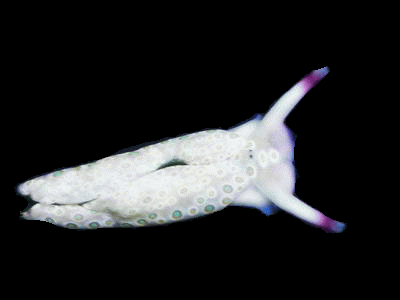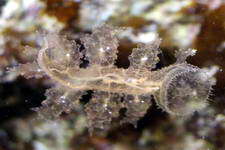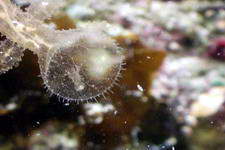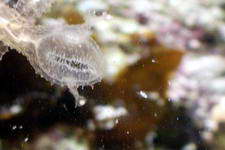This mirror is being hosted with the permissions of the original content creator for preservation and educational purposes.
 Presented
by Charles & Linda RaabeMactan
Island, The Philippines
Presented
by Charles & Linda RaabeMactan
Island, The Philippines
© 2008 All Rights
Reserved
As Beautifull and interesting as they are, sadly
there is very little
known about the multitudes of species, what is known is that they all
have very specific food sources such as only one type of sponge, coral,
algae and so on. Given this, it is almost impossible for us to provide
such specific diets in our tanks. But all hope is not lost, there are a
few speices that their diets consist of what we all have in our tanks,
mainly, micro and macro algae, the most common species are the lettuce
slugs.

Far to often we walk into a fish shop and see a
tank of wildly
colored
nudibranchs usualy listed as "Assorted Beautifull Slugs" but asked what
species they are, you will most likely get a blank look or a flat out
lie. They will also tell you that they are eating just fine because a
slug is crawling over the top of some fish flakes. Nudibranch
and
most slugs/flatworms are highly specialized feeders, usualy of corals,
sponges or tunicates. Not something we would be able to, or want to
provide within our aquariums.
I strongly recommend that you do not buy them unless you
know exactly what species you are buying and what
that
species feeds upon. If we stop buying them, then so will the fish
stores. One
other point a fish shop will not likely know or remember to mention is
that the bright coloration that we find so beautiful is actualy a
visual warning to potential predators that they are very toxic to eat,
which makes sense for a slow moving soft bodied creature that
lives out in the open to have a defense against being attacked, a very
toxic defense. To have one die of starvation within an
aquarium,
it
could release those very toxins upon the death of the slug.
Most likely killing your fish in short order.
Nudibranchs: Beautifull but Dangerous Marine
Creatures - "Most
sea slugs are either very difficult or impossible to keep in small
private aquariums. They are very delicate to ship and sensitive to
acclimation. Their diets are very specific, and, as much species are
toxics, after dying, there is a very real danger that, due to their
decomposition, some toxic compounds could be released into the aquarium
and disturb or even kill other organisms."
Melibe Fimbriata - This
one was a great "hitch hiking" find for me within my system and is one
of the few nudibranch that one could consider to be reef safe and able
to survive our systems as long as any pump intakes are covered. A great
little filter feeding Nudibranch also capable of consuming copepods if
they happen to sweep them up during their travels.


Feeding on Copepods


 Anemone predation and reproduction of Hitch
hiking Aeolid Nudibranchs
Anemone predation and reproduction of Hitch
hiking Aeolid Nudibranchs - "
Virtually all nudibranchs have
specialized mouth parts and digestive tracts. This means that they
consume only one or a few very closely-related foods, typically sponges
or other sessile invertebrates that cannot be supplied adequately in
aquariums. "
Naked Gills on Snails -
"
the Order
Nudibranchia is huge, with several thousand species having been
scientifically described, and more being found regularly that are not
yet described. "
Aeolid Nudibranch in the Reef Aquarium -
"
Having
a color pattern of any sort implies the production, utilization and
storage of pigments. Pigments are often complicated chemicals that may
be metabolically "expensive" to produce and maintain. Thus, there is a
cost of having "color" of any sort, but having a protective coloration
is better than being dinner. "

This mirror is being hosted with the permissions of the original content creator for preservation and educational purposes.








